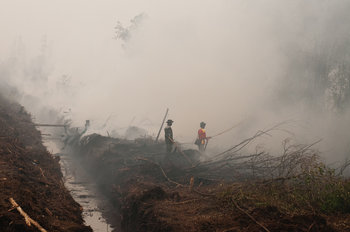
Carbon Dioxide Removal
Carbon dioxide removal is a class of strategies for removing carbon dioxide from the atmosphere and storing in the ocean, soil, geological structures or industrial facilities.Such methods need not involve high technology and large scale industrial infrastructure. For example, on a global scale farmers burn gigatons of vegetation each year. If this process were converted to biochar production it may have a significant impact on atmospheric carbon dioxide over time.Some methods of carbon dioxide removal propose altering ocean chemistry and other techniques that may have significant secondary risks.Solar Radiation Management
Solar radiation management is a controversial set of techniques that typically involve changing the Earth's atmosphere to be more light reflective. For example, chemicals added to clouds may reduce global temperatures. Such strategies propose to address climate change with climate change. In other words, they do not restore the climate to historic norms but instead move it to a new state such as a high carbon dioxide atmosphere and shiny clouds.Solar radiation management is generally considered a moral hazard that encourages escalation of carbon dioxide levels. It may also have significant secondary risks. Yet another common criticism of solar radiation management is that it may be costly and that its proposal may be primarily driven by a profit motive.Precautionary Principle
The precautionary principle is the legal and ethical guideline that technologies be proven to be safe before their introduction. It is completely possible for climate engineering to have unintended consequences.| Overview: Climate Engineering | ||
Type | ||
Definition | The use of technology to alter the climate. | |
Related Concepts | Afforestation Soil Carbon | |



























